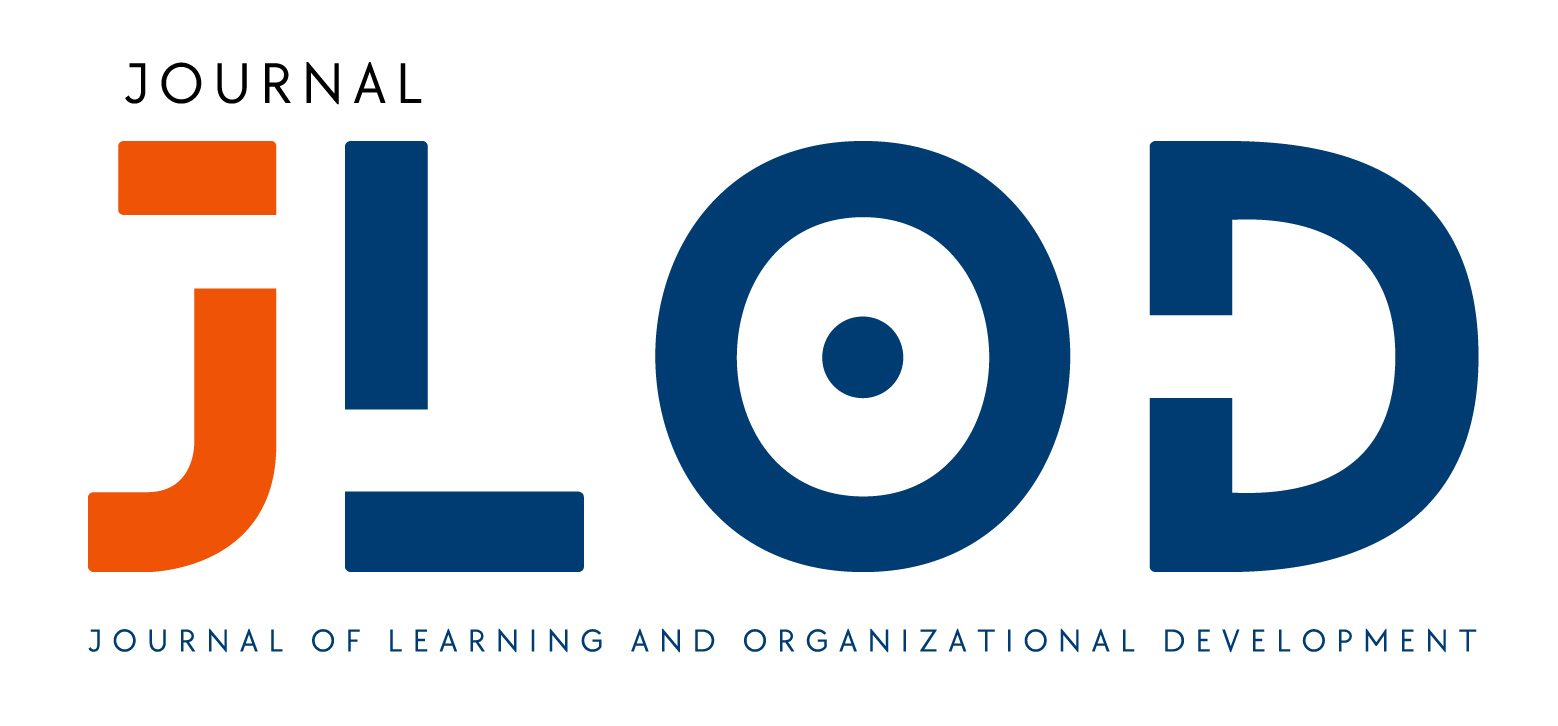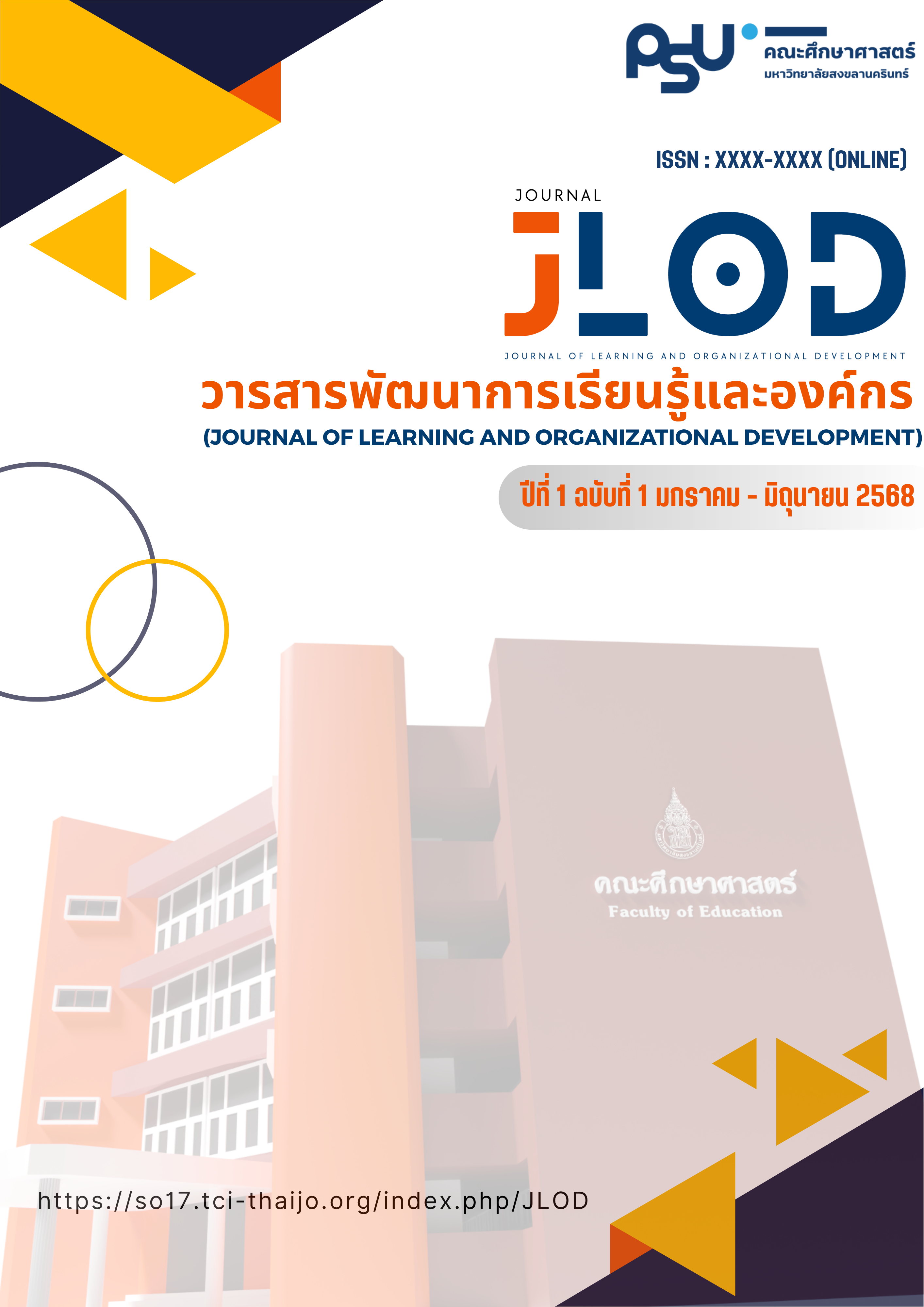ผลการจัดการเรียนรู้โดยใช้กิจกรรมสะเต็มศึกษา เรื่อง ปัจจัยที่มีผลต่ออัตราการเกิดปฏิกิริยาเคมี เพื่อส่งเสริมแนวคิดทางเคมีของนักเรียนชั้นมัธยมศึกษาปีที่ 5 โรงเรียนสาธิตมหาวิทยาลัยสงขลานครินทร์ (ฝ่ายมัธยมศึกษา)
คำสำคัญ:
การจัดการเรียนรู้กิจกรรมสะเต็มศึกษา, แนวคิดทางเคมี, ความพึงพอใจต่อการจัดการเรียนรู้บทคัดย่อ
การวิจัยนี้มีวัตถุประสงค์เพื่อ 1) เปรียบเทียบผลสัมฤทธิ์ทางการเรียนก่อนและหลังได้รับการจัดการเรียนรู้ โดยใช้กิจกรรมสะเต็มศึกษา 2) เปรียบเทียบแนวคิดทางเคมีก่อนและหลังการจัดการเรียนรู้โดยใช้กิจกรรมสะเต็มศึกษา 3) ศึกษาความพึงพอใจของนักเรียนชั้นมัธยมศึกษาปีที่ 5 โรงเรียนสาธิตมหาวิทยาลัยสงขลานครินทร์ (ฝ่ายมัธยมศึกษา) ที่มีต่อจัดการเรียนรู้โดยใช้กิจกรรมสะเต็มศึกษา กลุ่มตัวอย่างคือ นักเรียนชั้นมัธยมศึกษาปีที่ 5 ห้องเรียนวิทยาศาสตร์สุขภาพกลุ่ม 4 จำนวน 35 คน เครื่องมือที่ใช้ในการวิจัยประกอบด้วย แผนการจัดการเรียนรู้โดยใช้กิจกรรมสะเต็มศึกษา แบบทดสอบเรื่องปัจจัยที่มีผลต่ออัตราการเกิดปฏิกิริยาเคมี แบบวัดแนวคิดทางเคมี และแบบสอบถามความพึงพอใจต่อการจัดการเรียนรู้ ซึ่งดำเนินการทดลองแบบกลุ่มทดลองหนึ่งกลุ่มวัดผลก่อนและหลังการทดลอง โดยวิเคราะห์ด้วยค่าเฉลี่ย ส่วนเบี่ยงเบนมาตรฐาน การทดสอบค่าทีชนิดกลุ่มตัวอย่างไม่เป็นอิสระต่อกัน
ผลการวิจัยพบว่า นักเรียนที่ได้รับการจัดการเรียนรู้โดยใช้กิจกรรมสะเต็มศึกษามีผลสัมฤทธิ์และแนวคิดทางเคมีหลังเรียนสูงกว่าก่อนเรียนอย่างมีนัยสำคัญทางสถิติ 0.05 นักเรียนมีระดับความพึงพอใจภาพรวมอยู่ในระดับมากที่สุด
เอกสารอ้างอิง
Becker, K. H., & Park, K. (2011). Effects of STEM integration on high school students' learning and interest in science and technology. International Journal of Science and Mathematics Education, 9(6), 1105–1124.
Bybee, R. W. (2013). The case for STEM education: Challenges and opportunities. National Science Teachers Association.
Gabel, D. (1999). Improving teaching and learning through chemistry education research: A look to the future. Journal of Chemical Education, 76(4), 548.
Johnstone, A. H. (2010). You can't get there from here. Journal of Chemical Education, 87(1), 22-29.
Jolly, A. (2014). Six characteristics of a great STEM lesson. Education Week.
Kelley, T. R., & Knowles, J. G. (2016). A conceptual framework for integrated STEM education. International Journal of STEM Education, 3, 11.
Khamchu, N., Jittangprasert, P. & Dornbundit, P. (2019). A Comparison on the Results of the Development of Chemical Conception on Solutions Using STEM Education Learning Management andInquiry-Based Learning for Tenth Grade. Rangsit University National Research Conference 2019, Thailand. [in Thai]
Khonsoong, N. (2017). Development of STEM Activity in Chemistry on Factors Affecting the Rate of Chemical Reactions to Enhance Chemistry Concepts and Twenty-First-Century Skills for the High School Level. [Master of education thesis, Srinakharinwirot University.[in Thai]
Krajcik, J., & Delen, I. (2017). Engaging learners in STEM education. Eesti Haridusteaduste Ajakiri, 5(1), 35–58.
Nakhleh, M. B. (1992). Why some students don't learn chemistry: Chemical misconceptions. Journal of Chemical Education, 69(3), 191 196.
Özmen, H. (2004). Some student misconceptions in chemistry: A literature review of chemical bonding. Journal of Science Education and Technology, 41(3), 298-314.
Salaeh, N., Mophan, N. & Waedramae, M. (2017). Effect of STEM Education on Chemistry Achievement, Analytical Thinking Ability and Instructional Satisfaction of Grade 10 Students. Princess of Naradhiwas University Journal of Humanities and Social Sciences, 4(1), 42–53. [in Thai]
Taber, K. S., & Cole, R. (2019). Chemistry education: Best practices, opportunities, and trends. Royal Society of Chemistry Publishing.
Tsaparlis, G., & Angelopoulos, V. (2000). Conceptual versus algorithmic learning in high school chemistry: The case of basic quantum chemical concepts. Chemistry Education Research and Practice, 1(1), 33-50.
ดาวน์โหลด
เผยแพร่แล้ว
รูปแบบการอ้างอิง
ฉบับ
ประเภทบทความ
สัญญาอนุญาต
ลิขสิทธิ์ (c) 2025 วารสารพัฒนาการเรียนรู้และองค์กร (JLOD)

อนุญาตภายใต้เงื่อนไข Creative Commons Attribution-NonCommercial-NoDerivatives 4.0 International License.






